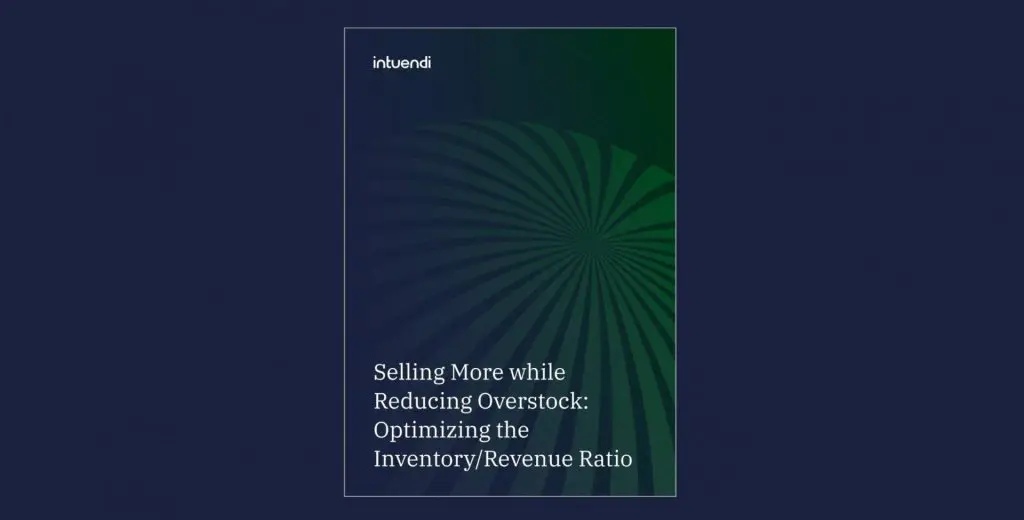Odoo is an undeniably powerful and flexible ERP, especially for growing businesses. However, as companies scale and their supply chains become more complex, many find that Odoo’s native inventory forecasting capabilities just can’t keep up. If you’re hitting that wall, this guide is for you. We’ll explore Odoo’s specific limitations, provide clear criteria for choosing the right demand planning software, list the best tools with proven Odoo integration, and outline the best practices for connecting them successfully. The goal is to move beyond basic reordering rules to achieve superior forecast accuracy, optimize your inventory levels, and build a more resilient supply chain on your Odoo foundation.
Odoo’s Native Limitations for Demand Planning
While Odoo’s standard reordering rules are great for simple inventory management, they often fall short when faced with the challenges of modern demand planning. The core issue is that Odoo’s native forecasting is typically based on simple historical averages or recent sales velocity, lacking the sophistication needed to navigate today’s supply chain complexities.
Here are the primary limitations you’re likely facing:
- Absence of Advanced Statistical Models: Odoo doesn’t come with built-in algorithms like ARIMA, Exponential Smoothing, or AI-driven models. These are the engines needed to accurately predict seasonality, identify underlying trends, and account for the impact of external factors. Without them, you’re essentially driving by looking only in the rearview mirror.
- Difficulty Managing Demand Volatility: Planning for a big marketing promotion, launching a new product, or dealing with erratic demand patterns is incredibly challenging within Odoo’s standard modules. You can’t easily model “what-if” scenarios or adjust for events that don’t follow historical patterns.
- Limited Collaborative Forecasting: Odoo isn’t designed to be a collaborative platform for Sales & Operations Planning (S&OP). This makes it difficult to systematically gather and incorporate crucial qualitative insights from your sales and marketing teams—the people who know what’s really happening on the ground—into the final demand plan.
Key Criteria for Selecting a Demand Planning Tool for Odoo
When you’re looking to plug these gaps, it’s easy to get distracted by flashy features. For an Odoo user, your evaluation checklist needs to be focused and practical. Here are the key criteria, in order of importance for your specific environment.
First and foremost is seamless Odoo integration. This is the absolute deal-breaker. The tool must have a proven, reliable method for connecting to your Odoo instance. Look for a pre-built connector on the Odoo App Store, a robust and well-documented API, or a dedicated integration partner with a strong track record.
Next, you need a robust forecasting engine. The entire point of this exercise is to overcome Odoo’s native limitations, so the software must offer advanced statistical and AI/ML-driven forecasting methods. This is what will give you the accuracy you need.
The software should also have strong inventory optimization capabilities. A better forecast is only useful if it translates into smarter inventory decisions. The tool should be able to take that forecast and automatically calculate dynamic safety stock levels, reorder points, and optimal order quantities.
Finally, consider the user experience and scalability. The interface should be intuitive enough for your planners to use effectively without needing a PhD in data science. The platform must also be able to scale with your business as your SKU count, number of warehouse locations, and data complexity inevitably grow.
Top Demand Planning Tools with Proven Odoo Integration
This is the heart of the matter. The following tools are known for their powerful demand planning capabilities and, crucially, their proven integration paths with Odoo.
Netstock
Netstock is an ideal solution for small and medium-sized enterprises (SMEs) whose primary goals are to prevent stockouts and slash excess inventory. It’s known for its incredibly user-friendly dashboards that make it easy to set inventory policies and generate recommended orders. For Odoo users, its biggest advantage is its integration method: a certified, pre-built connector available directly on the Odoo App Store. This ensures a streamlined, reliable, and well-supported data sync right out of the box.
GMDH Streamline
Positioned as a powerhouse for businesses with more complex forecasting needs, GMDH Streamline is a great fit for companies dealing with strong seasonality, frequent promotions, or intricate product hierarchies. Its strength lies in its advanced statistical forecasting engine. It connects with Odoo via a direct, bi-directional connector. This synchronizes sales history and inventory levels from Odoo to Streamline, and then sends the optimized purchase plans and updated forecasts back into Odoo, creating a seamless planning loop.
Intuendi
Intuendi is a powerful, AI-driven platform designed to automate demand forecasting and inventory replenishment from end to end. It’s an excellent choice for e-commerce, retail, and distribution businesses that want to leverage the power of machine learning without having to hire a dedicated data science team. Its integration with Odoo is typically handled through a pre-built connector. This automates the flow of sales, product, and inventory data, allowing Intuendi’s AI engine to generate highly precise purchasing recommendations that can be fed back into Odoo.
Lokad
Lokad offers a unique and highly quantitative approach, specializing in probabilistic forecasting to manage uncertainty. Instead of predicting a single number, Lokad provides a range of probabilities for different demand scenarios. This makes it a great fit for businesses that want to optimize their inventory decisions based on financial impact (e.g., weighing the cost of a stockout against the cost of carrying excess inventory). Its integration is achieved through a flexible data connection that pulls raw data directly from Odoo’s database or API, giving its advanced quantitative engine the fuel it needs for its calculations.
Odoo Integration Strategies: Methods and Best Practices
The success of your project hinges on how well you manage the integration itself. Here’s some practical advice for making the connection successful.
Choosing Your Integration Method
When available, Odoo Marketplace Connectors are almost always the simplest, fastest, and most reliable option. They are purpose-built and typically supported by the software vendor. Direct API Integration is a more powerful but also more resource-intensive alternative. It’s the right choice if you have highly specific needs or a heavily customized Odoo environment, but it will require developer resources. As for manual CSV/Excel transfers, these should only be considered a very temporary stopgap. They are inefficient, prone to error, and simply not scalable.
Best Practices for a Smooth Implementation
To ensure your integration project is a success, follow this simple checklist.
- Start with Data Hygiene in Odoo: Before you connect anything, clean up your data. Make sure your item master data, sales history, and on-hand inventory records in Odoo are clean and accurate. Remember the golden rule: garbage in, garbage out.
- Define a Clear Data Map: Document exactly what data will flow from Odoo to the planning tool (e.g., sales orders, current stock levels) and what will flow back (e.g., recommended purchase orders, updated forecast figures).
- Test Thoroughly: Don’t go for a “big bang” launch. Run a pilot test with a small subset of your SKUs to validate the entire data flow and check the forecast accuracy before you roll it out across the entire business.
- Focus on User Adoption: A new tool is useless if nobody uses it correctly. Train your planning team not just on the software’s buttons and features, but on the new, improved planning process that the tool enables.
Build a Smarter Supply Chain on Your Odoo Foundation
Let’s be clear: for any growing business running on Odoo, integrating a specialized demand planning tool is a necessary evolutionary step. It’s how you move from basic inventory control to strategic, forward-looking supply chain management.
The solution is a disciplined one: start by understanding Odoo’s limits, then carefully select a tool with proven integration capabilities like Netstock, Intuendi, or GMDH Streamline, and finally, follow best practices for a smooth implementation. Your journey to a smarter supply chain can start right now. Begin by auditing your data quality within Odoo today to prepare for a seamless and successful integration.





